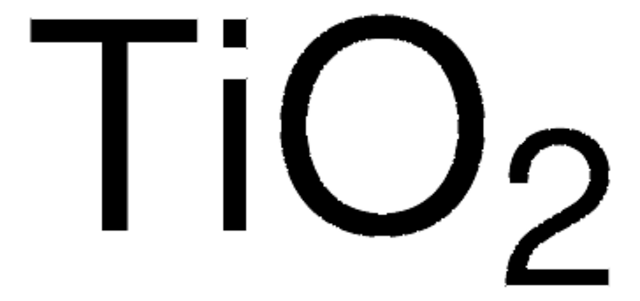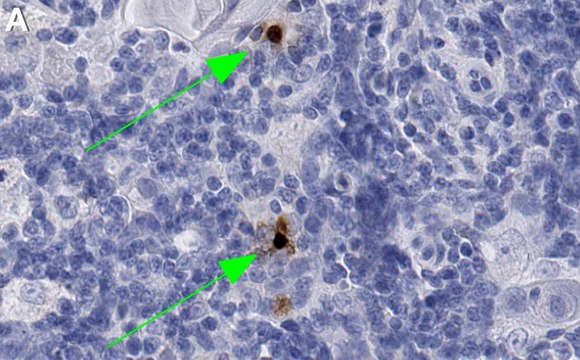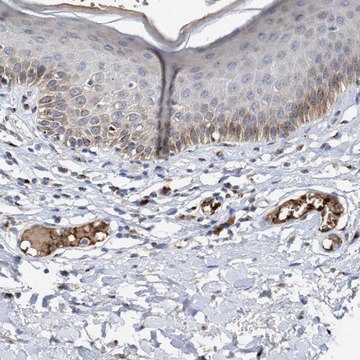SAB1411231
Anti-CCL2 antibody produced in rabbit
purified immunoglobulin, buffered aqueous solution
Sign Into View Organizational & Contract Pricing
All Photos(1)
About This Item
UNSPSC Code:
12352203
NACRES:
NA.41
Recommended Products
biological source
rabbit
Quality Level
conjugate
unconjugated
antibody form
purified immunoglobulin
antibody product type
primary antibodies
clone
polyclonal
form
buffered aqueous solution
mol wt
antigen 11 kDa
species reactivity
human
technique(s)
western blot: 1 μg/mL
NCBI accession no.
UniProt accession no.
shipped in
dry ice
storage temp.
−20°C
target post-translational modification
unmodified
Gene Information
human ... CCL2(6347)
Related Categories
General description
C-C motif chemokine ligand 2 (CCL2) gene is one of several cytokine genes clustered on the q-arm of chromosome 17. Cytokines are a family of secreted proteins involved in immunoregulatory and inflammatory processes. The protein encoded by this gene is structurally related to the CXC subfamily of cytokines. Members of this subfamily are characterized by two cysteines separated by a single amino acid. This cytokine displays chemotactic activity for monocytes and basophils but not for neutrophils or eosinophils. It has been implicated in the pathogenesis of diseases characterized by monocytic infiltrates, like psoriasis, rheumatoid arthritis and atherosclerosis. It binds to chemokine receptors CCR2 and CCR4. (provided by RefSeq).CCL2 is a pro-inflammatory cytokine. It belongs to the family of CC-type chemokines, which can be produced by almost every cells.
Immunogen
CCL2 (NP_002973.1, 1 a.a. ~ 99 a.a) full-length human protein.
Sequence
MKVSAALLCLLLIAATFIPQGLAQPDAINAPVTCCYNFTNRKISVQRLASYRRITSSKCPKEAVIFKTIVAKEICADPKQKWVQDSMDHLDKQTQTPKT
Sequence
MKVSAALLCLLLIAATFIPQGLAQPDAINAPVTCCYNFTNRKISVQRLASYRRITSSKCPKEAVIFKTIVAKEICADPKQKWVQDSMDHLDKQTQTPKT
Biochem/physiol Actions
C-C motif chemokine ligand 2 (CCL2) plays a critical role in the development of allergic inflammatory reactions by employing immune cells, that is linked to autoimmune diseases. It binds to CC chemokine receptor 2 (CCR2) and regulates monocyte chemotaxis and T-lymphocyte differentiation. The protein recruits monocytes to liver. It is involved in macrophage fusion and foreign body giant cell formation.
Physical form
Solution in phosphate buffered saline, pH 7.4
Disclaimer
Unless otherwise stated in our catalog or other company documentation accompanying the product(s), our products are intended for research use only and are not to be used for any other purpose, which includes but is not limited to, unauthorized commercial uses, in vitro diagnostic uses, ex vivo or in vivo therapeutic uses or any type of consumption or application to humans or animals.
Not finding the right product?
Try our Product Selector Tool.
Storage Class Code
10 - Combustible liquids
WGK
WGK 3
Flash Point(F)
Not applicable
Flash Point(C)
Not applicable
Regulatory Information
新产品
Choose from one of the most recent versions:
Certificates of Analysis (COA)
Lot/Batch Number
Don't see the Right Version?
If you require a particular version, you can look up a specific certificate by the Lot or Batch number.
Already Own This Product?
Find documentation for the products that you have recently purchased in the Document Library.
Association of MCP-1 rs1024611 polymorphism with diabetic foot ulcers
Su N, et al.
Medicine, 97(28) (2018)
The regulation and importance of monocyte chemoattractant protein-1
Bianconi V, et al.
Current Opinion in Hematology, 25(1), 44-51 (2018)
Monocyte chemoattractant protein-1 (MCP-1)-2518 A/G polymorphism and lupus nephritis risk: A PRISMA-compliant meta-analysis
Sang GY, et al.
Medicine, 96(51) (2017)
The CC chemokine ligand, CCL2/MCP1, participates in macrophage fusion and foreign body giant cell formation
Kyriakides TR, et al.
The American Journal of Pathology, 165(6), 2157-2166 (2004)
Monocyte chemoattractant protein 1 released from macrophages induced by hepatitis C virus promotes monocytes migration
Liu Y, et al.
Virus Research, 240, 190-196 (2017)
Our team of scientists has experience in all areas of research including Life Science, Material Science, Chemical Synthesis, Chromatography, Analytical and many others.
Contact Technical Service




